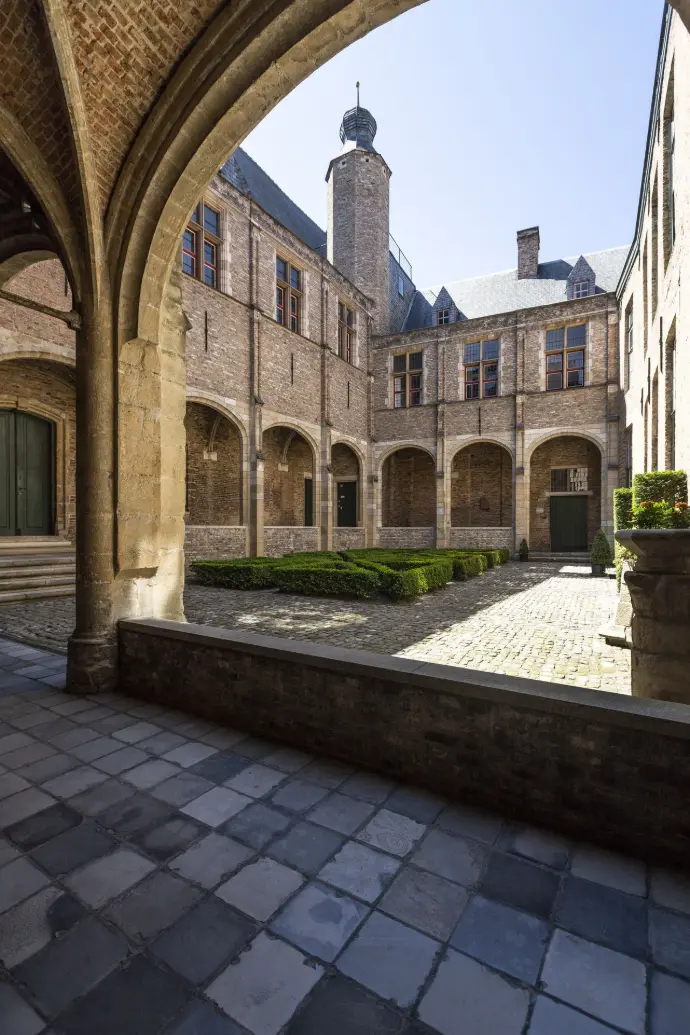HOF BLADELIN
Nestled in the heart of Bruges, Hof Bladelin is a magnificent medieval city palace with a rich history shaped by art, faith, and trade.
Since 1964, it has been under the care of the Congregation of the Sisters of Our Lady of the Seven Sorrows, Ruiselede, who are dedicated to preserving this remarkable heritage.
PRESENTATION
Stepping into the enclosed garden of Hof Bladelin is like travelling back to the Burgundian era of Bruges. Originally built for Pierre Bladelin, Treasurer of the Order of the Golden Fleece, the residence was later expanded by Piero de Medici, a member of the renowned Florentine banking dynasty, and further extended in the 16th century by the influential Egmont family.
Over the centuries, Hof Bladelin served as an aristocratic residence and, between 1632 and 1669, housed a Carmelite convent.
Around 1830, Abbot Léon de Foere established a religious institute for the poor, founded a lace school, and commissioned a neoclassical chapel. He also adorned the audience hall with monumental frescoes—faithful reproductions of Raphael’s Vatican murals.
LOPPEM CASTLE
Loppem Castle, near Bruges, is a stunning neo-Gothic masterpiece from the mid-19th century. Set within a vast park with ancient trees, ponds, and a labyrinth, it offers a unique historical and architectural experience.
In 1951, Baron Jean van Caloen established a foundation to preserve the castle, its furnishings, park, and outbuildings while promoting its rich art collections.
PRESENTATION
Designed as a complete work of art, the castle seamlessly blends exterior and interior elements. The English architect Edward Welby Pugin created the furniture, while Jean-Baptiste Bethune designed the interiors. Skilled local craftsmen crafted the stained glass, chandeliers, staircases, and fireplaces.
The ground floor features elegant reception rooms that reflect 19th-century grandeur, while the upper floor houses the family chapel and royal chambers. These rooms recall the castle’s prestigious past, including the stay of King Albert I and Queen Elisabeth in 1918, shortly after the First World War. The ground floor features elegant reception rooms that reflect 19th-century grandeur, while the upper floor houses the family chapel and royal chambers.
The castle displays medieval, Asian, and African art collections assembled by Jean and Roland van Caloen.
These rooms recall the castle’s prestigious past, including the stay of King Albert I and Queen Elisabeth in 1918, shortly after the First World War.






